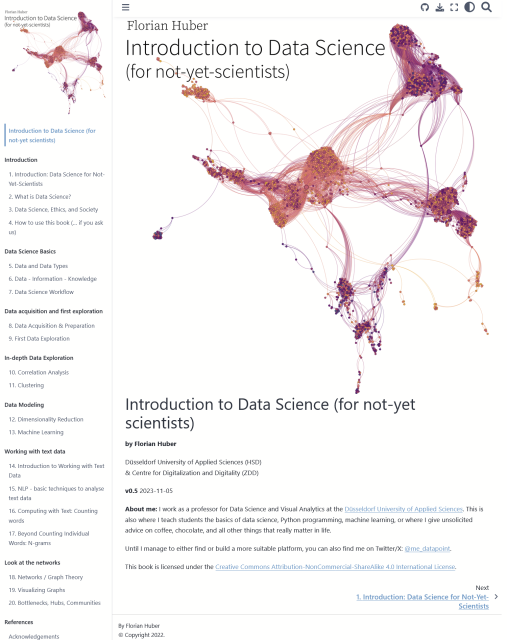One of the (many) good sides of teaching: you get plenty of time to delve into topics and develop your own material (and code).
I now want to share part of my materials as a #DataScience textbook online:
florian-huber.github.io/data_s…
(work in progress)
All materials and source code is on #github: github.com/florian-huber/data_…
And a pdf version can be found on #zenodo: zenodo.org/records/10074475
GitHub - florian-huber/data_science_course: Introduction to data science (for not yet scientists)
Introduction to data science (for not yet scientists) - GitHub - florian-huber/data_science_course: Introduction to data science (for not yet scientists)GitHub

Frank Aylward
in reply to Florian Huber • • •Charles Tapley Hoyt
in reply to Florian Huber • • •Frank Aylward
in reply to Charles Tapley Hoyt • • •Charles Tapley Hoyt
in reply to Frank Aylward • • •@foaylward installation of Python from the first-party installer works well for Windows and Mac.
I know that veteran programmers love environments, but this is just another confusing abstraction that students have to understand. Better to say "hey, if you want pandas, do `pip install pandas`" and it will just be there. I don't think the 3 conda steps starting at florian-huber.github.io/data_s… are going to make any student say "I love python"
4. How to use this book (… if you ask us) — Data Science for (not yet) scientists
florian-huber.github.ioFrank Aylward
in reply to Charles Tapley Hoyt • • •